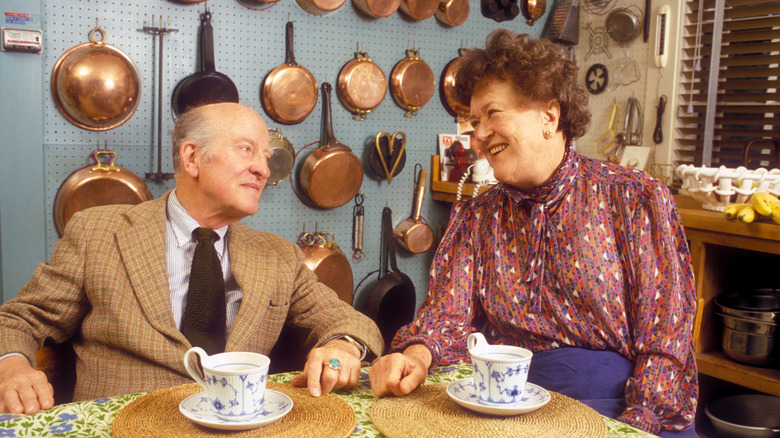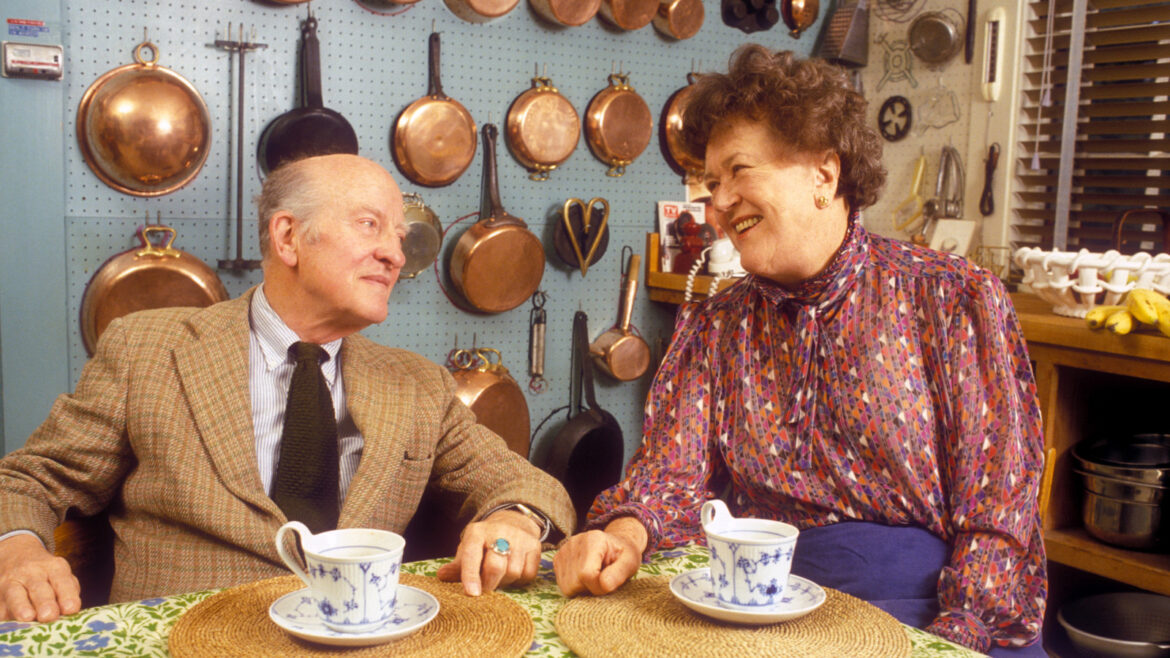
Rick Friedman/Getty Images
We may receive a commission on purchases made from links.
Beyond her expertise in cooking and worldwide notoriety for guiding generations of home cooks, Julia Child had strong thoughts about how a kitchen ought to be designed and organized. Much like her vaunted humility in the kitchen and desire to shatter notions that French cooking was out of grasp for home cooks, she espoused a kitchen that was practical and had everything conveniently within arm’s reach.
A peek into Julia Child’s actual kitchen was served up by Yankee Magazine in an article that offered snippets from the book “In Julia’s Kitchen: Practical and Convivial Kitchen Design Inspired by Julia Child,” and it won’t be surprising that there was nothing fussy about it. Polished copper pots abounded on wooden peg boards and surrounded the stove, and utensils and specialty cooking gadgets were prominent and abundant. She definitely had a disdain for the “modern” kitchen design with white-cabinets and a sanitized aesthetic. As Pat Pratt, a friend of Child’s, said, “Julia hated those kitchens! We visited several of those kitchens together. Julia thought they were just hopeless. They were so bare. Not even a kitchen towel on the counter. . . . A kitchen is a place to do things!'” (via Yankee Magazine).
Functionality and accessibility rule the day

ChicagoPhotographer/Shutterstock
It may be a surprise to learn that Julia Child did not have an island in her own kitchen. Instead, she favored working at her kitchen table where she and her family then ate. From a usability standpoint, this allowed her to take a seat for prep tasks, which aligns with her top tips for home cooks, such as always making time for prep work and cleaning things as you go. Although a tremendous amount was out and on display in Child’s kitchen, it would be a mistake to think it was messy. Quite the opposite. Pots, pans, and knives were all grouped and had their own homes, and even her spices were organized alphabetically.
Child also embraced practical butcher block countertops with an overhang that enabled her to easily wipe off crumbs and food scraps. She cleaned hers with a strong cleaner and then seasoned with a thin layer of olive oil (or sometimes went over them with a cut lemon), but you should follow butcher block care and cleaning guidance. That includes avoiding sitting hot pots or pans directly on them or letting water sit as it can stain. From her copious amounts of cookware at the ready to her practical kitchen counters of choice, Child’s kitchen was a testament to her culinary (and broader) sensibilities — never fussy, never too serious, and never trendy or contemporary at the expense of practicality.


Dining and Cooking